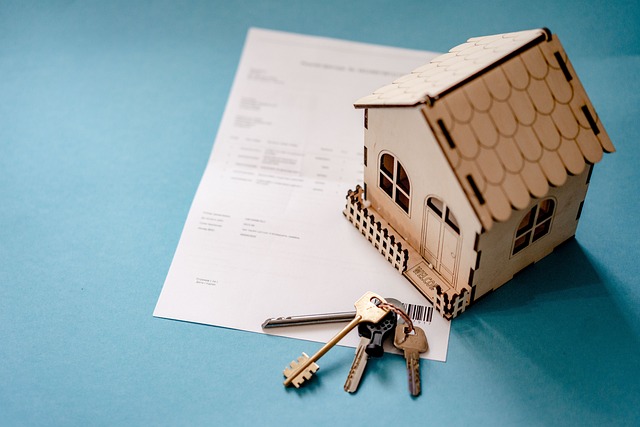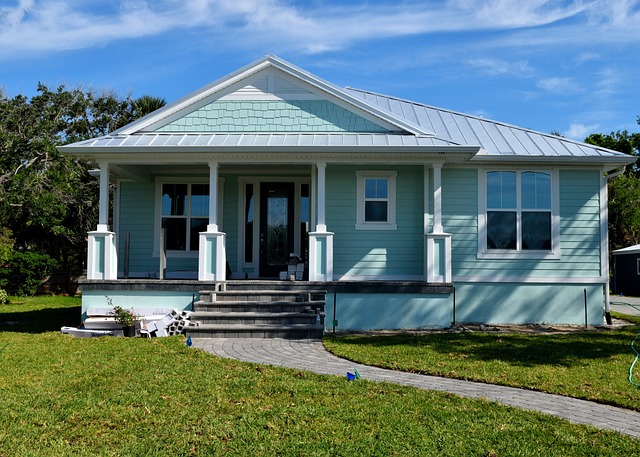The Executive Condominium (EC) segment in Singapore's real estate market serves as a middle ground between public and private housing, offering a cost-effective luxury living option with longer lease terms than HDB flats. Prospective EC buyers must consider factors like location, unit type, development size, and overall property market sentiment when evaluating prices. ECs in mature estates or near regional centers tend to be more expensive due to their convenience and popularity. Infrastructure improvements can also impact property values significantly. Market analysts and investors should monitor recent EC launches for sales trends to predict future pricing dynamics, keeping an eye on key metrics such as average selling price per square foot, units sold, and take-up rates. Historical data indicates that EC prices are sensitive to government policies, economic conditions, and supply changes, with notable fluctuations following the introduction of the SERS and subsequent property cooling measures. The affordability and quality of life offered by ECs make them a key component of Singapore's housing market, catering to diverse needs and reflecting the dynamic nature of real estate trends in the region.
In the dynamic Singapore real estate landscape, discerning the value of an Executive Condominium (EC) requires a nuanced understanding of market trends and influencing factors. This article delves into the intricacies of EC pricing, providing readers with a comprehensive analysis of historical price movements, current market drivers, and comparative housing prices in Singapore. From there, it offers strategic insights on evaluating EC values, emphasizing essential metrics, economic indicators, and predictive trends to guide informed investment decisions in the Executive Condominium Singapore market. Join us as we navigate the factors shaping the future of EC pricing within the island’s vibrant property sector.
- Understanding Executive Condo (EC) Pricing Trends in Singapore
- 1.1 Historical Price Movements of ECs in Singapore
Understanding Executive Condo (EC) Pricing Trends in Singapore

In Singapore, the Executive Condominium (EC) market presents a unique segment for homebuyers seeking a middle-ground between public and private housing. Prospective buyers interested in Executive Condominium Singapore should pay close attention to pricing trends within this niche, as they can offer more affordable luxury living options compared to private condos while providing longer lease terms than public housing flats. The pricing of ECs is influenced by a multitude of factors, including location, unit type, development size, and the overall property market sentiment. For instance, ECs located in mature estates or near regional centers tend to fetch higher prices due to their desirability and convenience. Additionally, the completion of nearby infrastructure projects can lead to an uptick in pricing as demand for these properties increases.
Market watchers and potential investors should track the sales trends of recent EC launches to gauge where prices might be heading. Factors such as the average selling price per square foot (psf), the number of units sold, and the take-up rate are critical indicators that can inform purchasing decisions. It’s also important to consider the age of the development, its facilities and amenities, and how these align with the evolving needs and preferences of homeowners. By analyzing past and current pricing trends, coupled with an understanding of the broader economic climate, one can better anticipate the direction of EC prices in Singapore. This knowledge is invaluable for those looking to invest or purchase an Executive Condominium as their abode.
1.1 Historical Price Movements of ECs in Singapore

Executive Condos in Singapore have exhibited a dynamic pricing trajectory over the years, reflecting the broader trends within the property market. Historical price movements indicate that Executive Condominiums (ECs) serve as an attractive housing option for both singles and families due to their affordability compared to private condominiums while offering similar facilities and amenities. Prices of ECs have been influenced by government policies, economic conditions, and the availability of units. For instance, after the introduction of the Selective En Bloc Redevelopment Scheme (SERS) in 2007, prices of ECs surged due to a scarcity of new EC launches. This was followed by a cooling measure implemented in 2012, which tightened loan-to-value (LTV) ratios and waiting times for second-timer applicants, leading to a stabilization of prices. Subsequent years saw fluctuations in the property market, with EC prices responding to changes in supply and demand dynamics, as well as broader economic factors such as interest rate adjustments. Notably, the introduction of the Extended CPF Housing Grant (EHG) in 2019 further stimulated demand among eligible first-time applicants, impacting price movements. Overall, the historical pricing trends of Executive Condominiums in Singapore underscore their role as a significant segment within the property market, influenced by policy changes and economic shifts, offering both investment opportunities and homeownership for a diverse range of buyers.
In conclusion, the dynamics of Executive Condominium (EC) pricing in Singapore reflect a unique segment within the property market that warrants attention for investors and homebuyers alike. The historical price movements of ECs, as discussed, present a narrative of strategic investment opportunities. Prospective buyers should consider the nuances of EC pricing trends, particularly the impact of policy adjustments and market sentiment, when making decisions regarding this housing option. As the landscape of real estate continues to evolve, the Executive Condominium Singapore remains a testament to adaptable living solutions that offer the benefits of both public and private housing. Stay informed on the latest developments in EC pricing to navigate this vibrant segment effectively.
